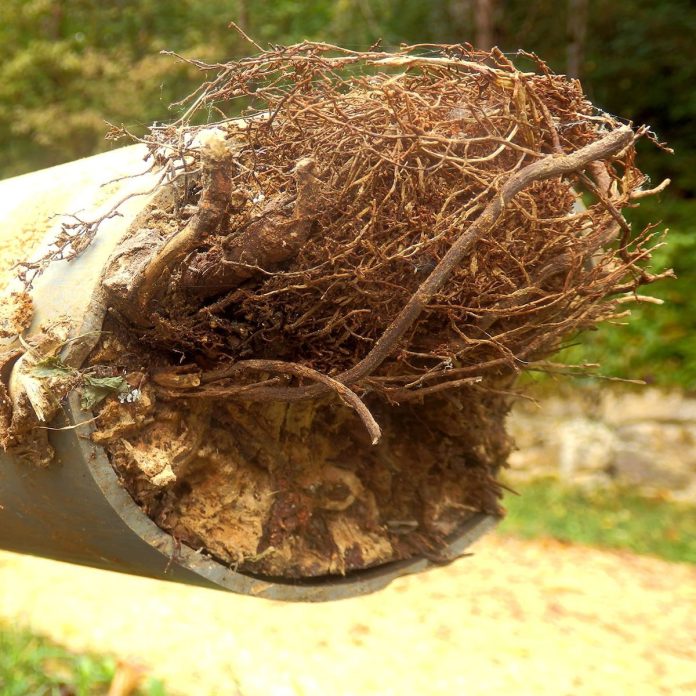It’s true: Tree roots can find their way into buried water lines and plumbing pipes, interrupting the flow into and out of your home.
“Tree roots respond to the sound waves of water and will seek it out,” says Lou Meyer of Davey Tree Company, which offers tree services throughout the nation. “If there’s the tiniest crack in a pipe, they will capitalize on that to get to the water. I’ve seen sewer lines completely clogged.”
The sound of gurgling from your household drains is one sign tree roots may be clogging your pipes. When foul odors or squishy areas in your yard near the septic lines accompany the gurgling, there’s a good chance tree roots are the problem.
While it’s not always an easy fix, there are several measures available to kill these tree roots, along with ways to prevent future problems.
Home Remedies To Kill Tree Roots in the Sewer Line
When anything to do with plumbing goes awry, homeowners want quick solutions. Tanya Klein of Anta Plumbing & Drain Services in Toronto, Ontario suggested several chemical means to clear tree roots in pipes.
- Foaming root killer with dichlobenil: “It stops root growth, kills the root in the pipe and prevents regrowth,” Klein said. “It is activated when it has contact with water and is simple to use. All you do is pour it into your toilet and flush.”
- Copper sulfate: “You can buy it from a hardware store,” Klein says. “Pour it down your toilet and flush. It will take a few hours to work.” Klein adds it’s a toxic substance that’s banned in some places, so check to see if it’s OK in your area. “It can hurt pets and people who come into contact with it,” Klein says.
- Rock salt: “The safest way, and the way I prefer, to get rid of tree roots from pipes is old-fashioned rock salt that you buy cheaply from any grocery store,” Klein says. “It draws out moisture from the roots, and they eventually dry up. You will need about two pounds of salt to flush down your toilet. Don’t use that toilet or flush again for about 12 hours.”
Additional Ways To Kill Tree Roots
If the blockage is severe, consider hiring a pro to try one of these mechanical means to clear the tree roots.
- Hydro-jetting: “Hydro-jetting is a highly effective method that utilizes high-pressure water to disintegrate and flush out tree roots,” says Ben Gold of Recommended Home Buyers, who frequently handles this situation while refurbishing homes. “It’s a non-invasive approach that not only clears the immediate blockage but also prevents future root growth.” Definitely leave this method to a pro, Gold says.
- Mechanical auger: “While effective, it’s important to note that this method may require professional assistance and can sometimes cause damage to aging pipes,” Gold says.
Install a Root Barrier
Once the tree roots are removed and the drains flowing again, it makes sense to prevent the problem from happening again. Plus, it’s important to protect the tree, because long term exposure to the chemicals mentioned above can kill it. “We don’t want to take out a healthy, happy tree,” Meyer says. “You can put a root barrier in place.”
Typically made of high-density polyethylene (HDPE), root barriers are used along foundations, sewer and water lines, as well as near sidewalks or patios prone to root issues. Once in place, it’s a permanent solution.
Here’s what you have to do:
- Dig down to the water or sewer line, wherever the roots are a problem, and prune the roots away from the area with sharp loppers or a saw. Continue to dig a trench approximately 24 to 30 inches deep to accommodate the root barrier.
- Place the root barrier in the trench. Some root barrier products have interlock to create a solid structure, while some are completely pliable and can wrap around the area. Use what works the best for your situation. Extend the barrier to just above the soil surface to prevent the roots from bypassing it. Also consider adding mulch or gravel keep the area neat and tidy.
- Backfill the area.
Forward Thinking
“Roots can be a problem, but please don’t let that stop you from planting more trees,” says Meyer. “They are a wildly important asset to our environment. We love trees and want more of them.”
Be sure to choose the right trees for the landscape and give them plenty of room. Meyer says trees that naturally grow near water like cottonwoods, sycamores, river birch or weeping willows should be kept farthest from any potential water source. Instead, consider smaller trees like dogwoods or redbuds.
Medium-sized trees, like red maples or black gum trees, are well-suited to be 10 to 15 feet away from a foundation or water lines. Larger trees like oaks, hickories or tulip poplars, need at least 20 feet away from structures.
If you can’t avoid having a large tree in an area that might be an issue decades down the road, install the root barrier now to head off a future problem. It just takes some forethought to maintain healthy, beautiful trees in your landscape, with no root issues.
www.familyhandyman.com
https://www.familyhandyman.com/article/how-to-kill-tree-roots/















